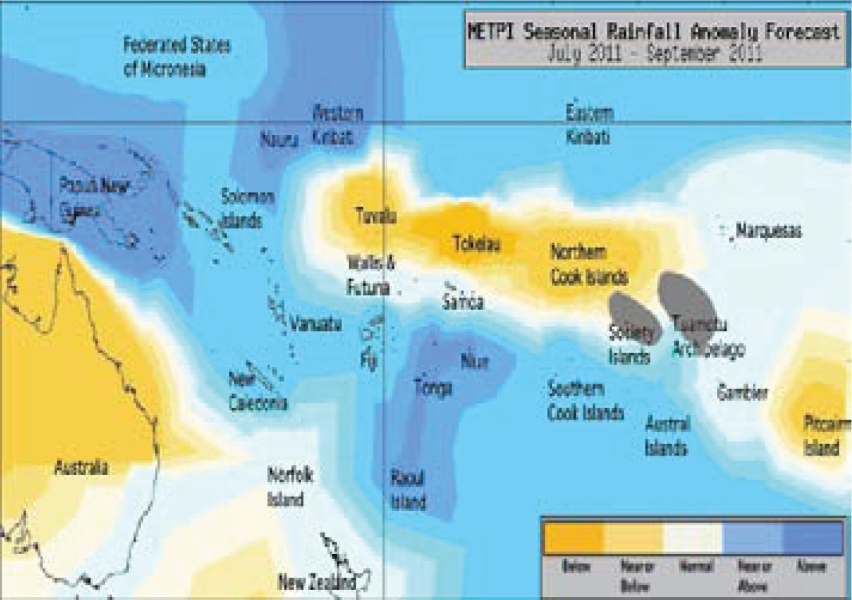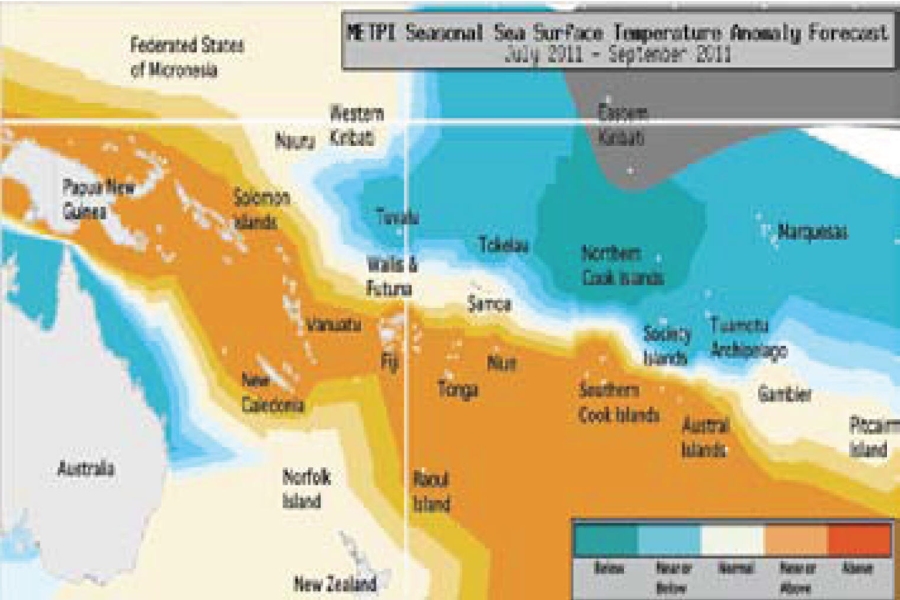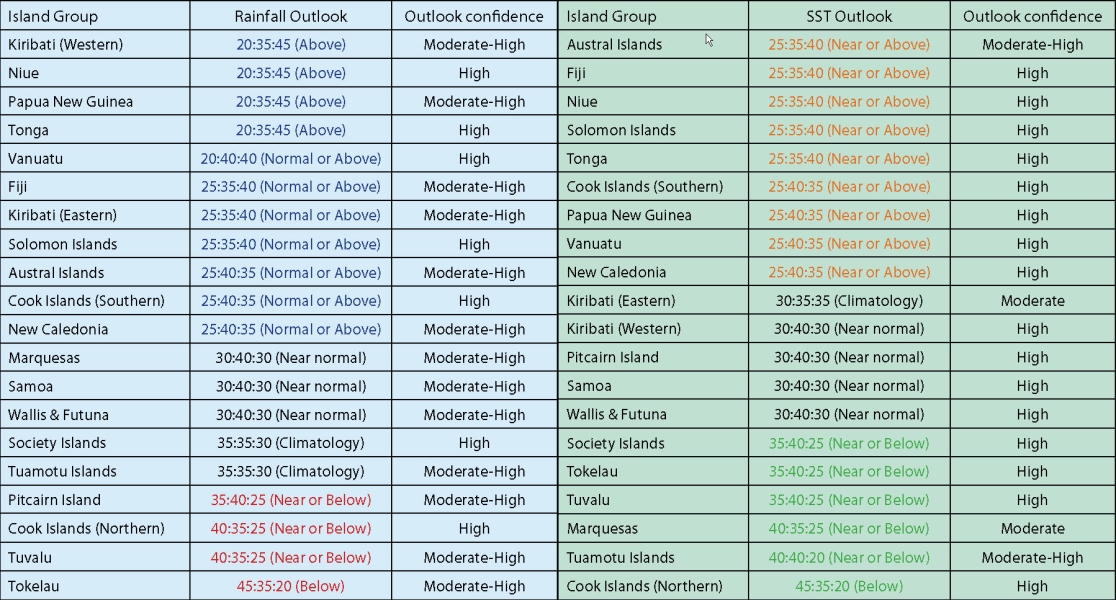Signals in the global climate models continue to showeasing of the rainfall anomalies associated with La Nina that existed this past season. During July – September suppressed convection is expected in the southwest Pacific near Tokelau, which is forecast to receive below normal rainfall in the coming three months. Average or below average rainfall is expected for Tuvalu, the Northern Cook Islands, and Pitcairn Island. Above normal rainfall is forecast for Western Kiribati, Tonga, Niue, and Papua New Guinea. Near or above average rainfall is forecast for Eastern Kiribati, Vanuatu, Fiji, the Solomon Islands, the Austral Islands, New Caledonia, and the Southern Cook Islands. Near normal rainfall is expected for Samoa, the Marquesas and Wallis & Futuna. No clear guidance is offered for the Society Islands or the Tuamotu Archipelago.
The global model ensemble shows weakening of near equatorial Pacific sea surface temperature cold anomalies relative to past months. For the coming three months, some negative anomalies are expected south of the Equator and east of the Dateline near the Northern Cook Islands and the northern part of French Polynesia. Below normal SSTs are expected for the Northern Cook Islands. Normal or below normal SSTs are forecast for the Tuamotu Archipelago, the Marquesas, the Society Islands, Tuvalu, and Tokelau. Near normal or above normal sea surface temperatures are forecast for Papua New Guinea, the Solomon Islands, New Caledonia, Vanuatu, Fiji, Niue, Tonga, the Southern Cook Islands, and the Austral Islands. Near normal SSTs are forecast elsewhere, except for Eastern Kiribati where no clear SST guidance is offered.
The confidence for the rainfall outlook is moderately high. The average region–wide hit rate for rainfall forecasts issued in July is 65%, 2% lower than all months combined. The SST forecast confidence is mostly high.



